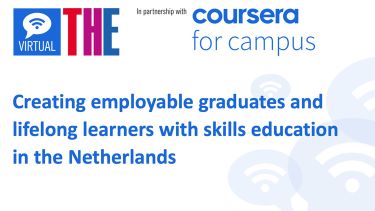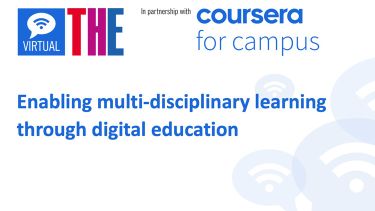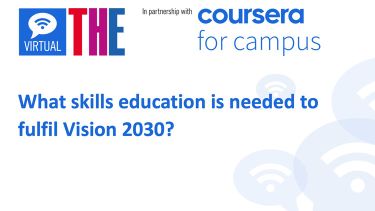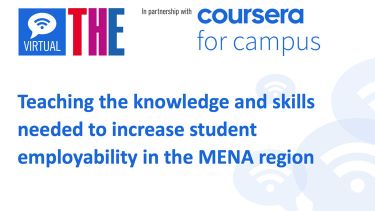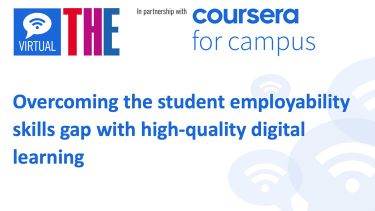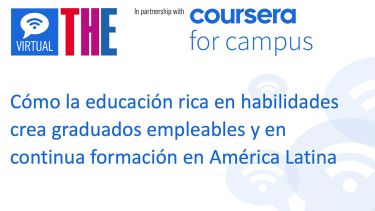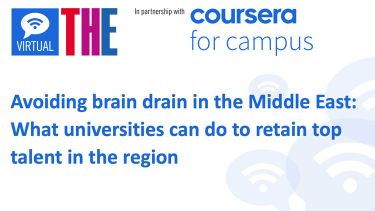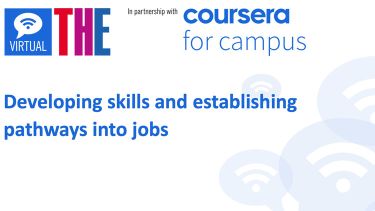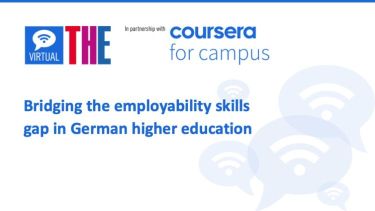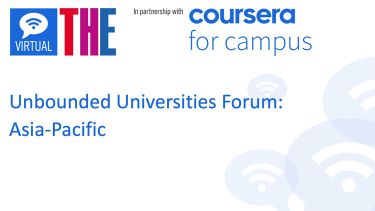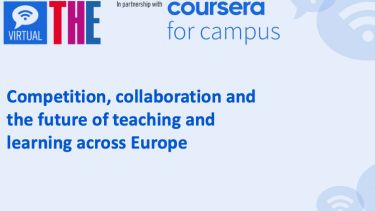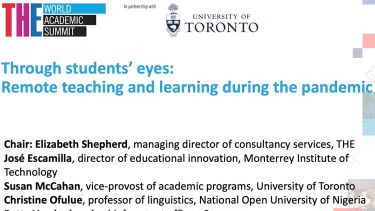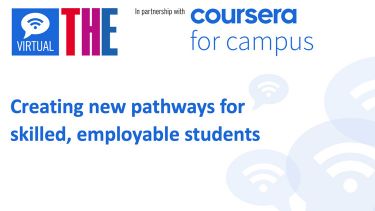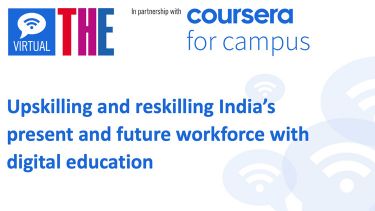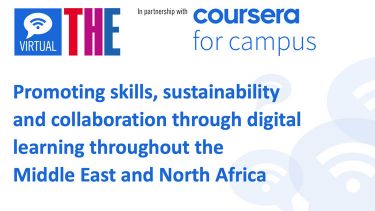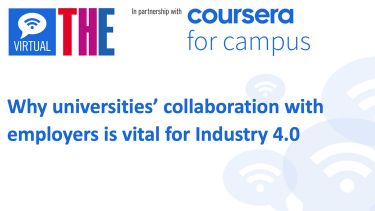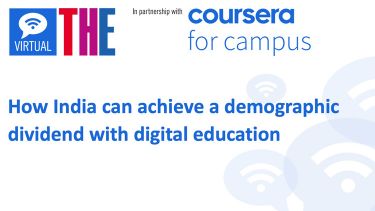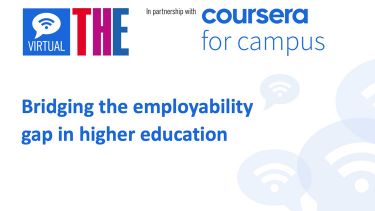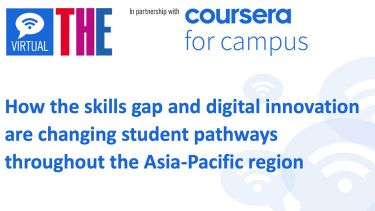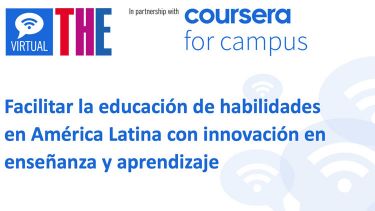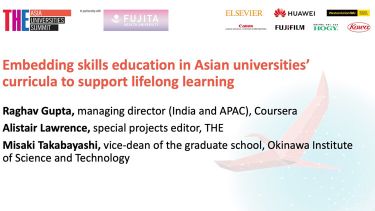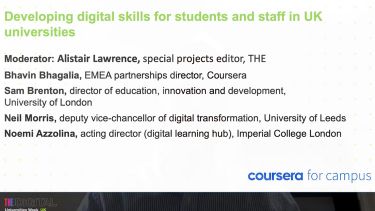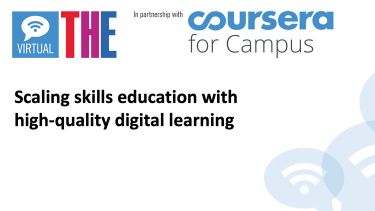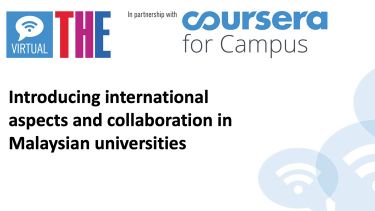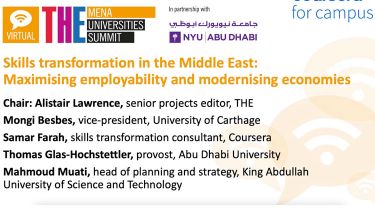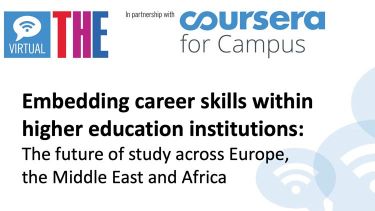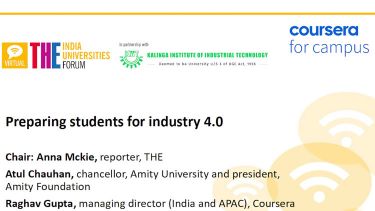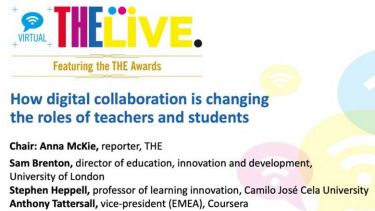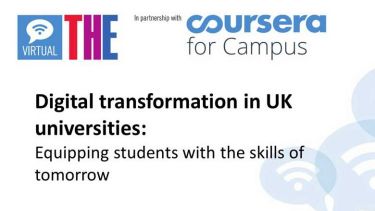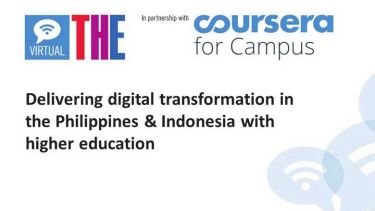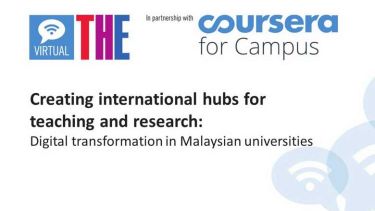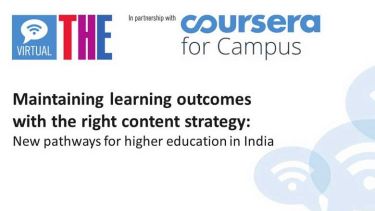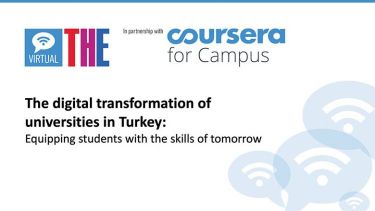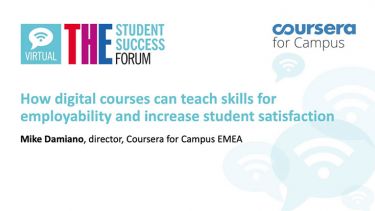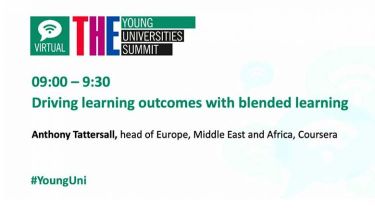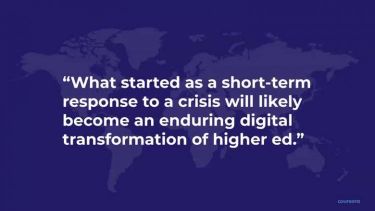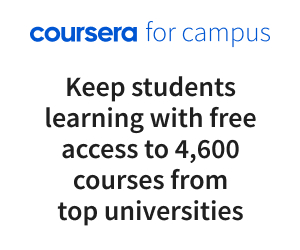The pandemic brought students and staff swiftly up to speed with digital innovation, but technology’s role extends beyond online learning, according to a panel at THE Live Asia
Covid-19 has both highlighted and accelerated the need for technological innovation in all sectors, and universities must take note. Leading a discussion on the topic at THE Live Asia, Raghav Gupta, managing director for India and APAC at Coursera, said universities faced multiple challenges – from ensuring students can access online teaching to equipping them with the digital skills they’ll need in the post-pandemic labour market.
One of the most crucial roles technology has played in the past eight months has been keeping students connected, said Les Allan, director of safeguarding and logistics at Heriot-Watt University Malaysia: “Our students are no longer based in one place, with many studying and participating in our university processes from across the world. I think we need to be adaptive and use technology that can be reconfigured quickly to support particular circumstances.”
Technology has dramatically changed the role of academics and this will continue to evolve, according to Karin Avnit, deputy director of the Centre for Learning Environment & Assessment Development at the Singapore Institute of Technology. “It used to be that we came to the professor because they were the source of knowledge – now, technological innovations are not replacing good teaching but they allow it to be better utilised,” she said. “The role of the professor is more of guidance, helping us sieve our way through the sea of information that is out there and, more importantly, to provide inspiration to untangle concepts.”
Greater technological innovation in academia also improves how data is used and the insight it offers. Lyu Qiulang, director of the product and application support centre at XuetangX, a massive open online courses platform created by Tsinghua University, explained how data can anticipate what students learn in class, arming them with knowledge before face-to-face learning: “We can make classroom interaction more vivid, collecting data during teaching activities such as real-time examination, meaning we can monitor the daily teaching dynamics of the entire university.”
Tokyo University of Science is analysing data from 20,000 students to see where their gaps in achievement lie in relation to their career goals, said Atsuo Yasumori, managing director of the university’s board. This sort of insight can help universities manage administration more effectively, added Jiang Wu, executive vice-president of Tongji University.
At Chiang Mai University in Thailand, incentives for academic staff are increasingly built around how they embrace new teaching methods and equip students with the knowledge to deal with disruptive technologies. But there will be wider implications for the university’s profile internationally, said Sampan Singharajwarapan, the university’s vice-president. “It means a chance to develop double and joint degree programmes with international institutions. As the national research university, we also have to prove our economic value in society, so technological innovations for us are a matter of survival.”
Innovations such as virtual and augmented reality – particularly at a time when in-person teaching is suspended – can immerse students in activities and provide a richer teaching experience, added Christian Wagner, associate provost for quality assurance at City University of Hong Kong. “We can build a synthetic virtual world to simulate a dangerous situation and test what happens if parameters are changed; we can get inside molecules or witness the artistic process,” he said.
During the pandemic, technology helped universities forge tighter relationships with their communities. One example is the gaming design department at Chitkara University in India, which built an immersive game to demonstrate the importance of social distancing, hand washing and wearing masks. Vice-chancellor Archana Mantri summarised her three key drivers of innovation as “equity, accessibility and quality of education, health and well-being”, highlighting why digital innovation in higher education is not just important for universities themselves, but to society as well.
Find out more about Coursera and higher education.






